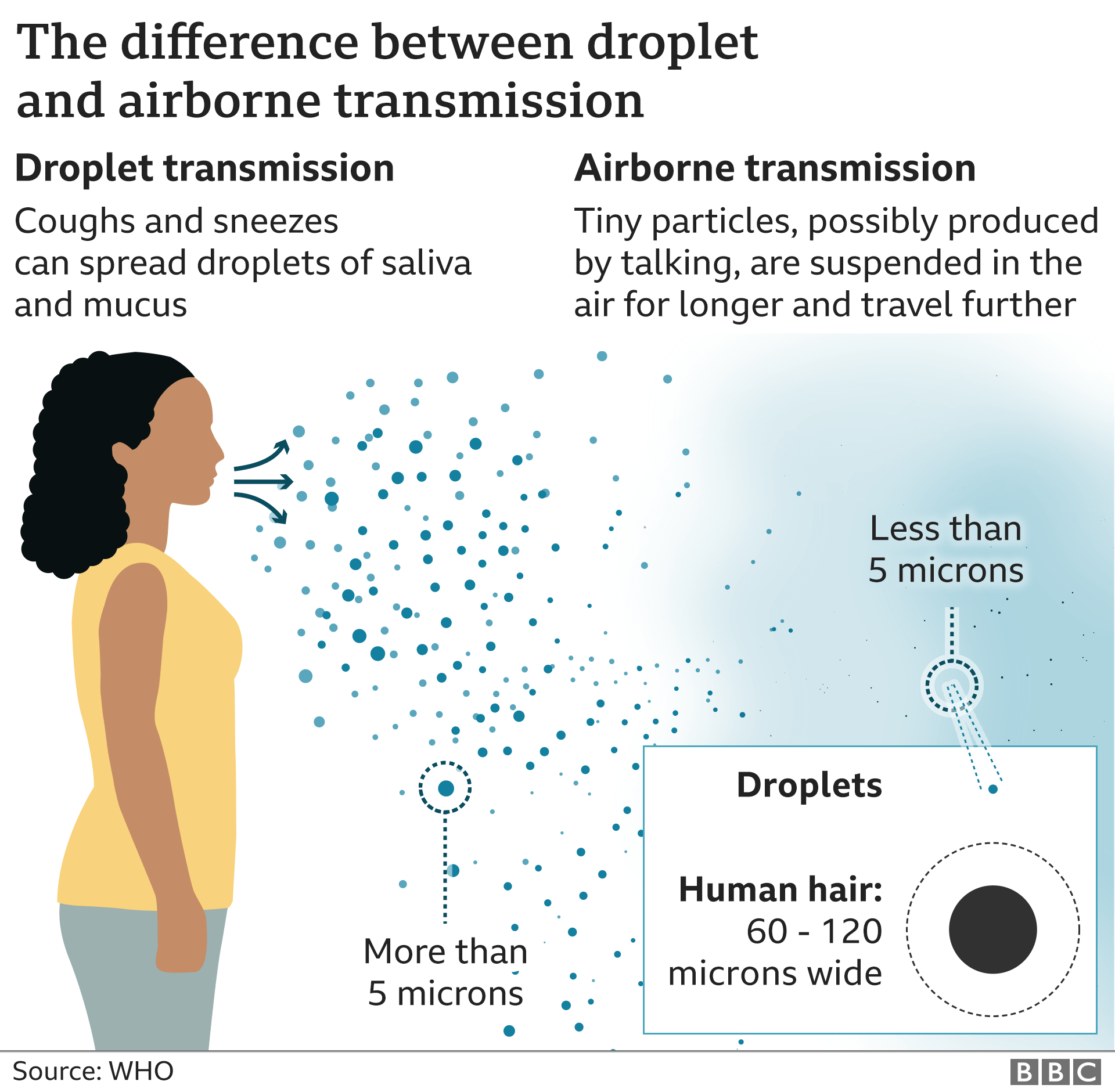Types of airborne diseases Coronavirus and COVID-19. Research has found that people with the virus can expel pieces of it when they exhale talk or cough.
 Coronavirus Who Rethinking How Covid 19 Spreads In Air Bbc News
Coronavirus Who Rethinking How Covid 19 Spreads In Air Bbc News
Theres a fundamental misunderstanding that all.

Can viruses be airborne. No the identification of airborne transmission doesnt mean the novel coronavirus is more infectious than it already was. Says The agency also explained more directly that people without symptoms may spread the virus. Health officials recently said that new coronavirus particles can become airborne.
A virus is considered to be airborne if you can catch it from inhaling aerosols from the air without being directly coughed on aerosols. Influenza commonly referred to as the flu is caused by 4 different types of influenza viruses - 3 of which affect humans - and compromises the health of your respiratory system your nose throat and lungs. This will help slow the spread of the virus from people without symptoms or people who do not.
And desiccation time all of which factor into infective potential explained Angela Bosco-Lauth paper co-author and assistant professor in biomedical sciences. Recent research suggests that contagious novel coronavirus particles can linger in the air for a few hours. There are two ways a coronavirus can be transmitted via air.
Its based on the idea that this novel coronavirus SARS-CoV2 spreads through droplets of saliva or mucus that get ejected into the air whenever someone who. The CDC says that SARS-CoV-2 can be spread via airborne transmission. The Coronavirus Can Be Airborne Indoors WHO.
That measurement6 feetisnt random. ALMOST 250 virus experts are saying that Covid-19 is AIRBORNE and lingers in the air outdoors however the World Health Organisation. Airborne viruses can affect both animals and humans.
In most cases an airborne disease is contracted when someone breathes in infected air. For airborne viral diseases like chickenpox and measles identifying cases can be done simply visually leading to accurate R 0 numbers. Evidence now confirms that this virus can remain airborne for longer times and further distances than originally thought.
Most of us have. In addition to close contact with infected people and contaminated surfaces spread of COVID-19 may also occur via airborne particles in indoor environments in some circumstances beyond the 2 m about 6 ft range encouraged by some. However for COVID-19 R 0 is more challenging to estimate.
Ability to disperse and remain airborne. Viruses can be carried on droplets large and small but there is likely a sweet spot between droplet size. The acknowledgments should have come sooner some.
These can be bacteria fungi or viruses but they are all transmitted through airborne contact. 1 Verywell Ellen Lindner Types of Airborne Viruses. Typically influenza goes away without any medical intervention but in certain situations it can.
Here is a list of airborne infectious diseases that you should know about. Most adults get two or three colds a year. Updated language on the CDC website now explicitly states airborne transmission of SARS-CoV-2 is possible meaning the virus can be inhaled even when individuals are more than 6 feet apart.
Children tend to get them more frequently. In droplet form the coronavirus is airborne for a few seconds after someone sneezes or coughs. The New York Times reported recently that 239 scientists from 32 countries have written an open letter to the World Health Organization WHO that the virus causing Covid-19 can remain airborne for a period of time and thus transmit itself.
This risk of infection. A virus that is airborne tends to spread easily and may be harder to control than pathogensmicroscopic causes of diseasethat are spread other ways.
